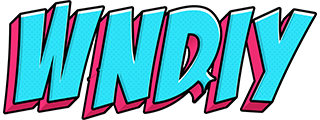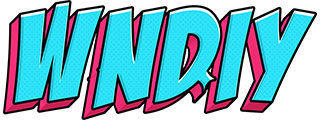The world of AI chatbots is exploding, offering exciting possibilities for communication, creativity, and automation. But why settle for pre-built chatbots when you can create your own, customized to your specific needs and interests? In this post, we’ll explore the various ways to set up your own AI chatbot, from beginner-friendly options to more advanced setups, and provide step-by-step instructions to guide you on your journey.
Choosing Your Hardware: Powering Your AI Creation
The hardware you choose will depend on your budget and desired functionality:
Entry-Level:
- Simple Graphics Card (e.g., GTX 1660): This can run smaller models (up to 7 billion parameters) easily. 16GB RAM is recommended if not using a GPU.
- Raspberry Pi: This can run the user interface and connect to online models via API keys, but not much else.
Mid-Range:
- RTX 3070: This can handle larger and more complex models, but consider if the extra power is necessary for your needs.
Advanced:
- Spare System: This can be used to run models like LLaMA and Mistral locally with the Ollama backend. This offers free usage (except electricity) and no limitations, but can be slower than online models.
- SBCs like Orange Pi or Raspberry Pi: These can run the front-end and connect to online models. While Pi 5 can run smaller models, Nvidia Jetson is better suited for local processing.
Building Your Chatbot: Bringing Your AI to Life
Now, let’s explore different approaches to building your chatbot:
Option 1: Docker and Open Web UI with LLaMA configs (Easiest)
This approach utilizes Docker containers and Open Web UI with LLaMA configs, allowing you to add online models with API keys on a pay-as-you-go basis. This is a cost-effective and user-friendly option.
Steps:
- Install Docker: Follow the instructions on the Docker website for your operating system.
- Clone the Open Web UI repository: Open a terminal and run git clone https://github.com/open-webui/open-webui.git
- Run the Docker container: Navigate to the text-generation-webui directory and run docker based on what files you need.
- Access the web UI: Open your browser and go to http://localhost:3000.
- Add online models: Use LLaMA configs to add your desired models with API keys.
- Start chatting! Interact with your chatbot and explore its capabilities.
Option 2: Chatbot UI (Slightly more technical)
This option requires slightly more technical knowledge but offers greater flexibility in model selection and customization.
Steps:
- Install Node.js and npm: Follow the instructions on the Node.js website.
- Clone the Chatbot UI repository: Open a terminal and run git clone https://github.com/mckaywrigley/chatbot-ui.git
- Install dependencies: Navigate to the chat-gpt-api directory and run npm install.
- Set up your API keys: Obtain API keys for your desired models and add them to the configuration file.
- Run the application: Run npm start in the terminal.
- Access the web UI: Open your browser and go to http://localhost:3000.
- Start chatting! Interact with your chatbot and explore its capabilities.
Option 3: Ollama Backend (Advanced)
This approach involves running models like LLaMA and Mistral locally on a dedicated system, offering free usage and no limitations, but requiring more advanced setup and potentially slower performance.
Steps:
- Set up a spare system: Ensure the system meets the minimum requirements for running Ollama.
- Install Ollama: Follow the instructions on the Ollama GitHub repository.
- Download model files: Download the desired model files (e.g., LLaMA, Mistral) to the appropriate directory.
- Configure Ollama: Edit the configuration file to specify the model files and other settings.
- Run Ollama: Start the Ollama server using the provided scripts.
- Connect your front-end: Configure your chosen front-end (e.g., Open Web UI) to connect to the Ollama server.
- Start chatting! Interact with your chatbot and explore its capabilities.
Accessing Your Chatbot Online: Sharing Your AI with the World
Hosting your chatbot online requires additional steps, such as setting up a URL and opening ports on your router. Alternatively, you can use a tunnel like Twingate (free for 3 users) or WireGuard for easier access or ZeroTier. Many web UIs also offer browser app installation, allowing you to access your chatbot like a web application.
Why Build Your Own AI Chatbot?
Building your own AI chatbot offers numerous advantages:
- Customization: Tailor your chatbot to your specific needs and interests.
- Cost-Effectiveness: Pay only for the resources you use, potentially saving significant money.
- Learning: Gain valuable knowledge about AI and chatbot technology.
- Control: You have complete control over your data and privacy.
While building your own AI chatbot may seem daunting, the available tools and resources make it easier than ever. So why not embark on this exciting journey and explore the endless possibilities of AI? You might be surprised at what you can create!
May the AI Sentinels Spare you in the Future!
Padawan Abhi Sunwalker


Comments